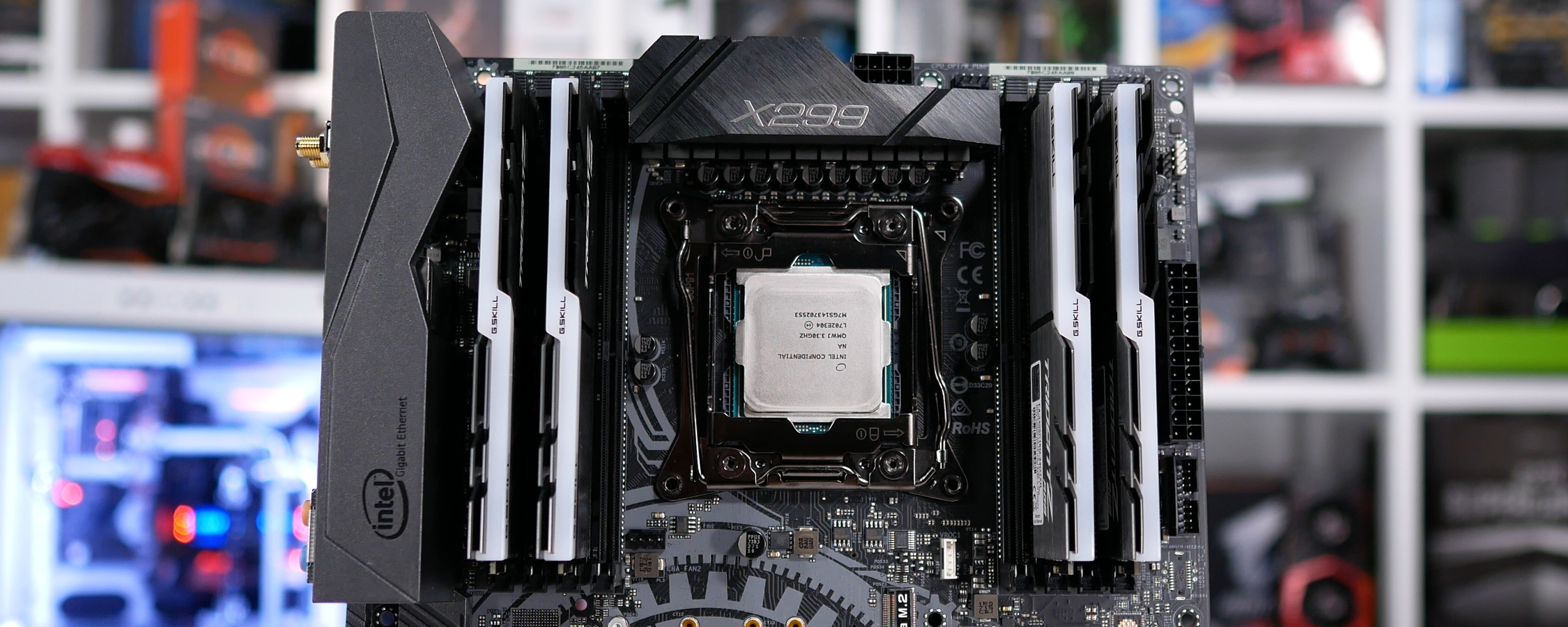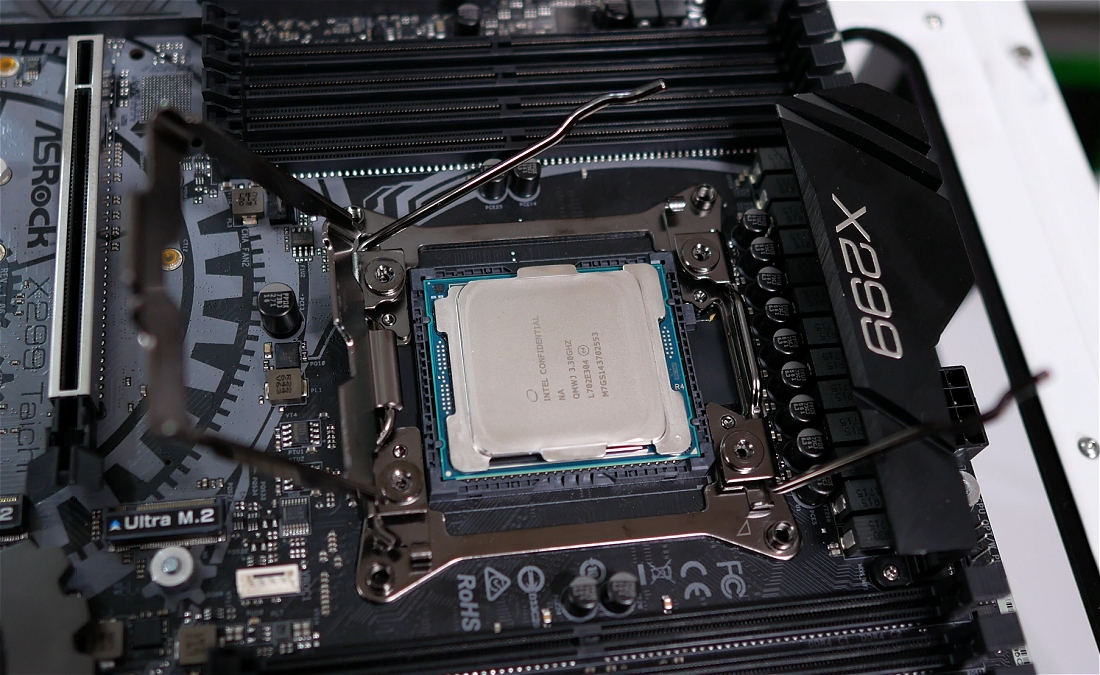As you're likely aware, during this year's Computex expo Intel announced the new Core X CPU series, comprising of not just three or four processors, but nine of them, making it the biggest range of high-end desktop CPUs Intel has ever announced. Today we'll finally be checking some of them out.
After years of remaining unchallenged, Intel is finally facing some serious competition with the arrival of AMD's Ryzen 7 and Ryzen 5 chips. Those parts have managed to put Intel's mainstream offerings under fire, and that's apparently just the beginning. AMD has also announced a high-end desktop series dubbed ThreadRipper, which is expected to include a chip with 16 cores and 32 threads, while costing considerably less than Intel's 10-core Broadwell-E offering.
Speaking of Broadwell-E, the sting from that series is still fresh in my mind. The 10-core 6950X came in at an insane $1,700 (now $1,450) while the 8-core 6900K wasn't much better at $1,050 (now $900). Those seeking a 6-core Intel CPU had to cough up at least $430 (now $370) for the 6800K but also sacrificed 12 PCIe lanes in the process (40 to 28).
Needless to say, Ryzen 7 made a mockery of Broadwell-E and Intel needed to counter sooner rather than later.
In its haste, the company has launched Skylake-X as a stopgap solution. However, in a world where the Ryzen 7 1700 goes for $310, it seems fair to question whether Intel can get away with charging roughly twice that amount for the 8-core Core i7-7820X, one of the new processors we're reviewing today.
Higher up the food chain is the Core i9-7900X, the most affordable of Intel's new Core i9 CPUs. At $1,000 the part is the cheapest 10-core CPU we've seen from Intel, though it remains to be seen if that's low enough to be competitive with AMD. Likewise, the company's new 6-core Core i7-7800X is priced at a more affordable $390, but that still puts it well above the aforementioned Ryzen 7 1700.
Intel's new series also includes a pair of quad-core parts, the Core i7-7740X and Core i5-7640X, though we aren't looking at these models yet. So far I've mentioned 5 of Intel's 9 new Core X CPUs, with the remaining 4 parts being premium 12, 14, 16 and 18-core models that won't be available until later in the year.
The Test
Forewarning: We've already covered specs and other related information of Skylake-X during Computex and since our coverage on this launch is a few days late, it seemed best to just get to the point. Big thanks go to Asrock who provided us with their X299 Taichi motherboard for testing along with a Core i9 chip. We got around to this review sooner thanks to Asrock since Intel's samples were awfully late.
For now we'll be focusing on Skylake-X chips with lower core counts: the Core i9-7900X, Core i7-7820X and i7-7800X which are set to become available before the end of the month. You'll learn how the three new CPUs compare, besides their core count and evident price differences, the key thing to note here are the available PCIe lanes.
For the full 44 lanes, consumers must invest no less than $1,000, while the $600 and $390 parts offer 28 lanes – the same amount as last season's 6800K.
Next to the previous-gen 10-core i7-6950X, the Core i9-7900X looks impressive. You get the same core and thread count while paying ~40% less. You also get a few more PCIe lanes and, of course, an upgraded CPU architecture which I will touch on in a moment. Compared to 2014's flagship Core i7-5960X, you're looking at more cores and a higher operating frequency for the same price.
AMD ThreadRipper will pack up to 16-core/32-threads and is expected to cost no more than the Core i9-7900X, though official pricing is not yet confirmed. What we do know is that the ThreadRipper platform will offer an incredible 64 PCIe lanes, while the CPUs will pack a mammoth 32MB L3 cache.
Although we can't compare the new Skylake-X chips to ThreadRipper, we can see how they compare with AMD's existing Ryzen 7 and Ryzen 5 parts, so let's do that...
|
Ryzen System Specs
|
Skylake-X System Specs
|
|
Broadwell-E System Specs
|
Kaby Lake System Specs
|
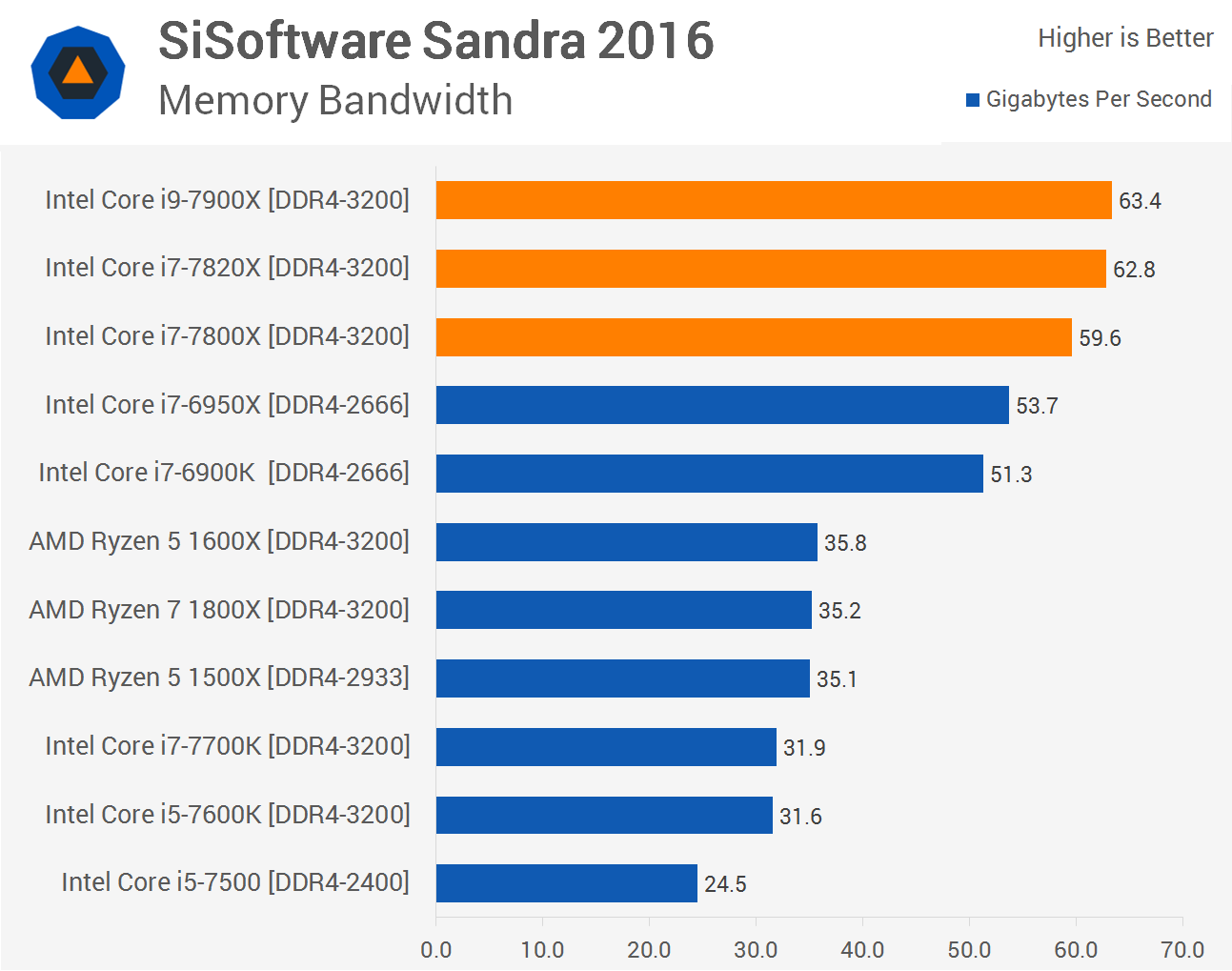
Previously with the Broadwell-E processors such as the 6950X and 6900K we were stuck at a memory speed of about 2666MHz. The Skylake-X models happily accepted the 3600MHz Xtreme Memory Profile of our G.Skill TridentZ RGB 32GB memory kit. However, we felt 3200 was a better speed for this test until we know how many memory modules, X299 motherboards and Core X CPUs can hit this frequency.
Anyway, running the memory at DDR4-3200 resulted in a massive bandwidth of 63GB/s for the Core i9-7900X and the 6-core 7800X also achieved roughly 60GB/s of throughput. Compared to the previous-gen 10-core 9650X, the 7900X enjoyed around an 18% boost in memory performance.
Synthetic & Application Benchmarks
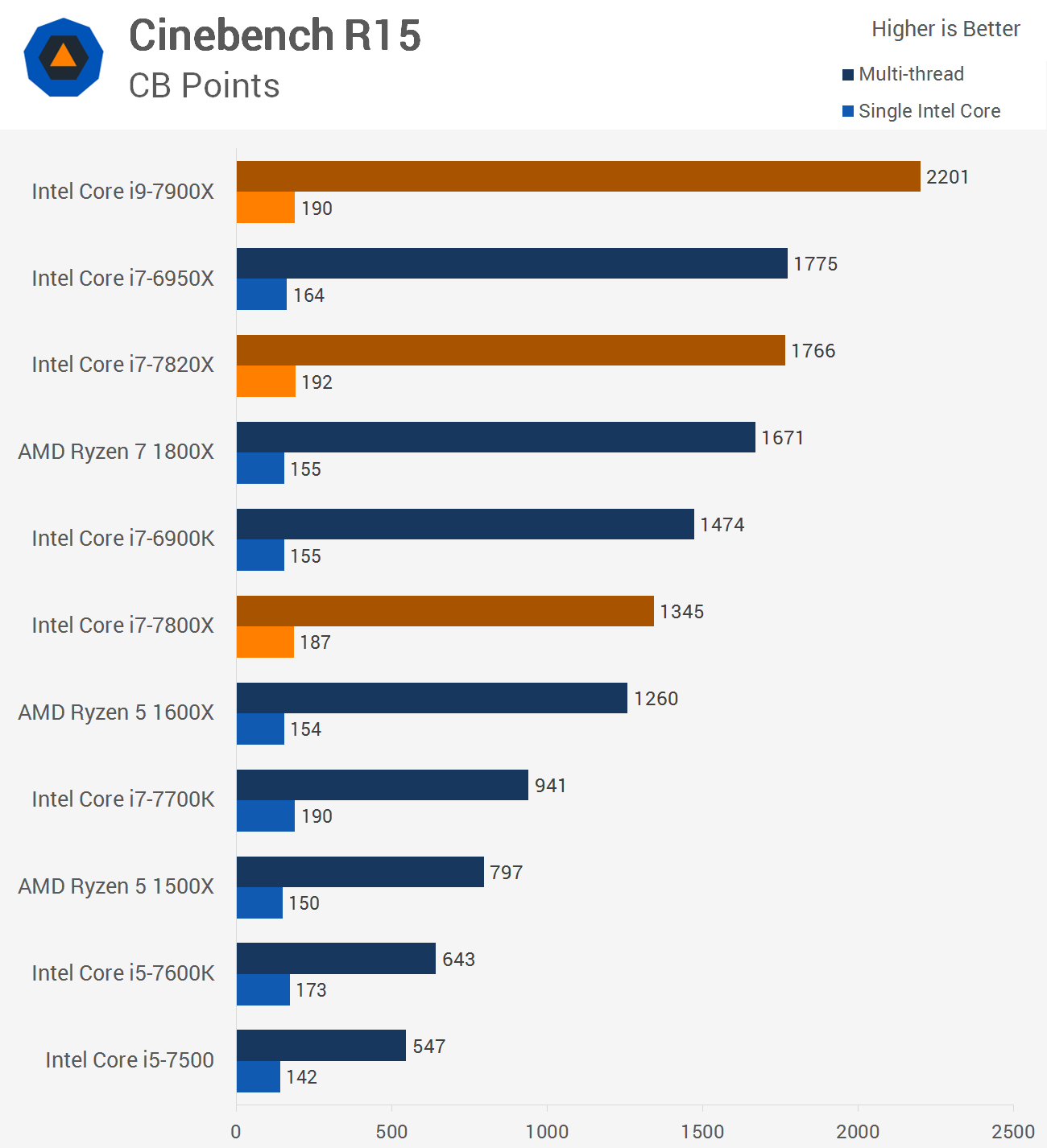
AMD's Ryzen 7 series is impressive in the Cinebench R15 multi-threaded test and as you can see, the 8-core CPU puts the 6900K down with relative ease. In fact, the 1800X isn't a great deal slower than the 10-core 6950X, largely thanks to greater operating frequencies.
However, the Core i7-7820 and its higher clock speeds make up for this, roughly matching the 6950X while offering almost a 20% boost over the 6900K. The 6-core 7800X also outscores the Ryzen 5 1600X – comfortably so for the single core result.
Then we have the big daddy, the Core i9-7900X and its amazing result of 2201 points, making it by far the most powerful desktop CPU we've ever tested. The single-thread result is also impressive, landing on par with the 7700K.

Those wanting to compress and decompress archives in a hurry should take notice because again there's no desktop CPU as fast as the Core i9-7900X, at least at the moment. The 7900X was 17% faster than the 6950X in this test while it was 19% faster than the Ryzen 7 1800X when decompressing. When it comes to compression work, Ryzen isn't nearly as efficient and as a result the 7900X was 65% faster for this test.

The 6950X was always a beast in Excel, taking just two seconds to complete the workload. This isn't a memory sensitive test so all that extra bandwidth doesn't really help the 7900X pull miles ahead, but it still offered an 8% performance increase. Meanwhile, the 7820X squared up with the Ryzen 7 1800X and the higher clocked 7800X matched the 6900K.
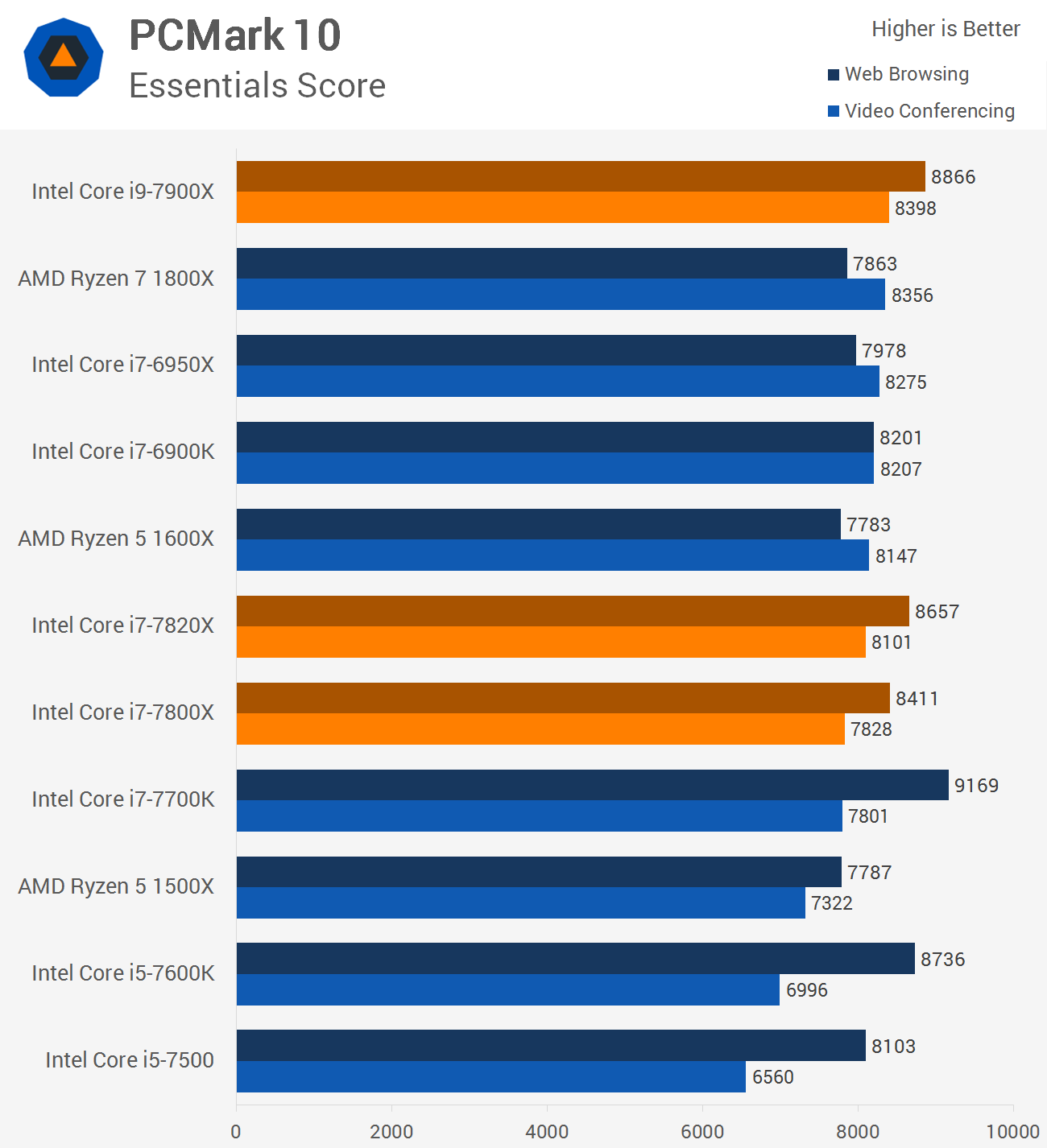
The PCMark 10 Essentials benchmarks aren't really designed to take advantage of core heavy CPUs, rather they simulate common, everyday ways that people use a PC. The workloads from this test that we're looking at cover web browsing and video conferencing.
As you can see, the 7700K and its superior out of the box clock speed makes it the best for web browsing tasks. That said, thanks to strong single and dual-core performance the 7900X still does well, as do the other Skylake-X CPUs. The video conferencing test is more core-heavy and as a result the 7900X does pull ahead of the 7700K by an 8% margin, but it's only able to equal the Ryzen 7 1800X.
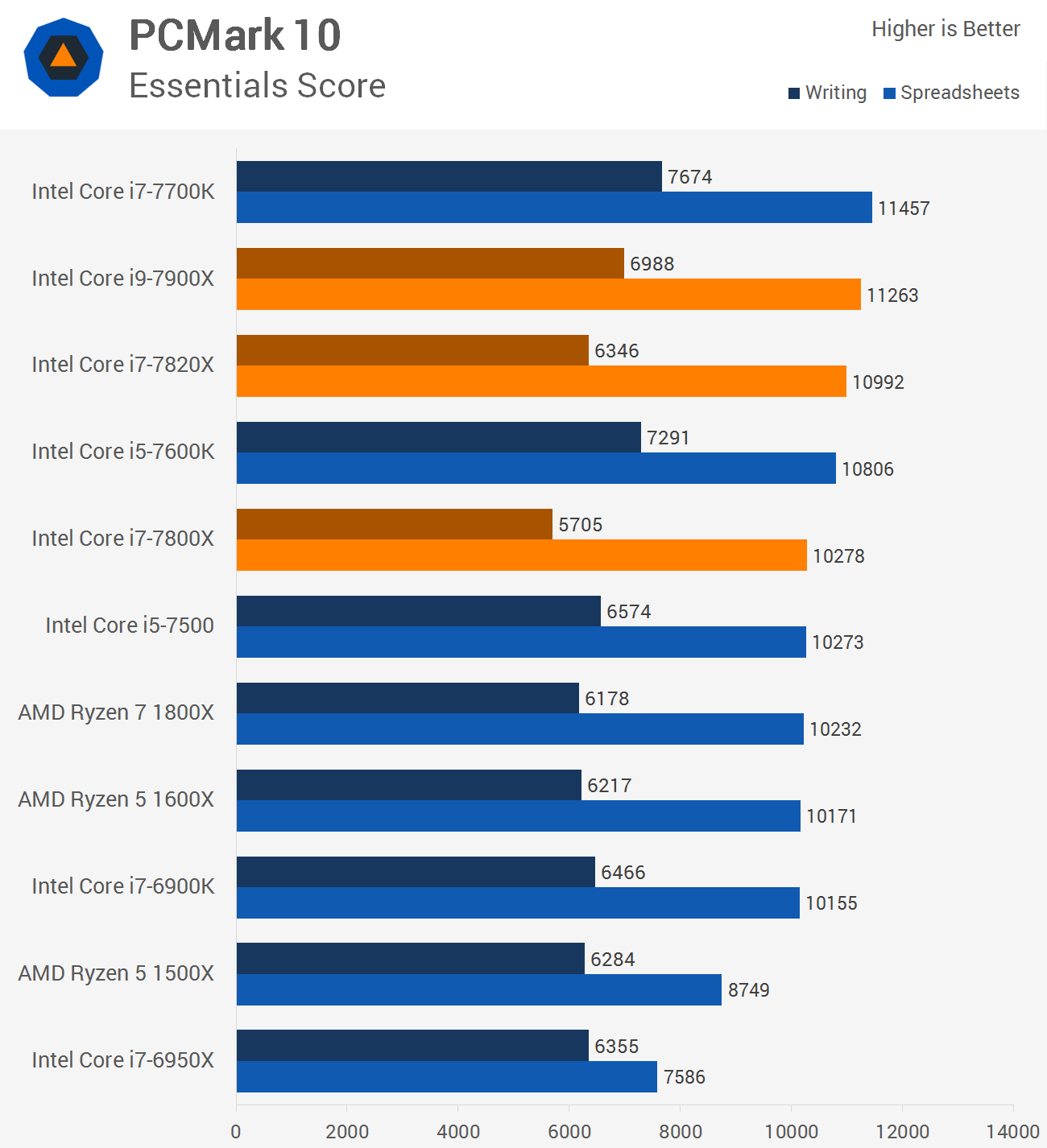
The Productivity test group measures system performance with everyday office applications, namely looking at Spreadsheets and Writing workloads. Again, not a test that takes advantage of workstation class hardware so quad-cores such as the Core i5-7600K still do great here.
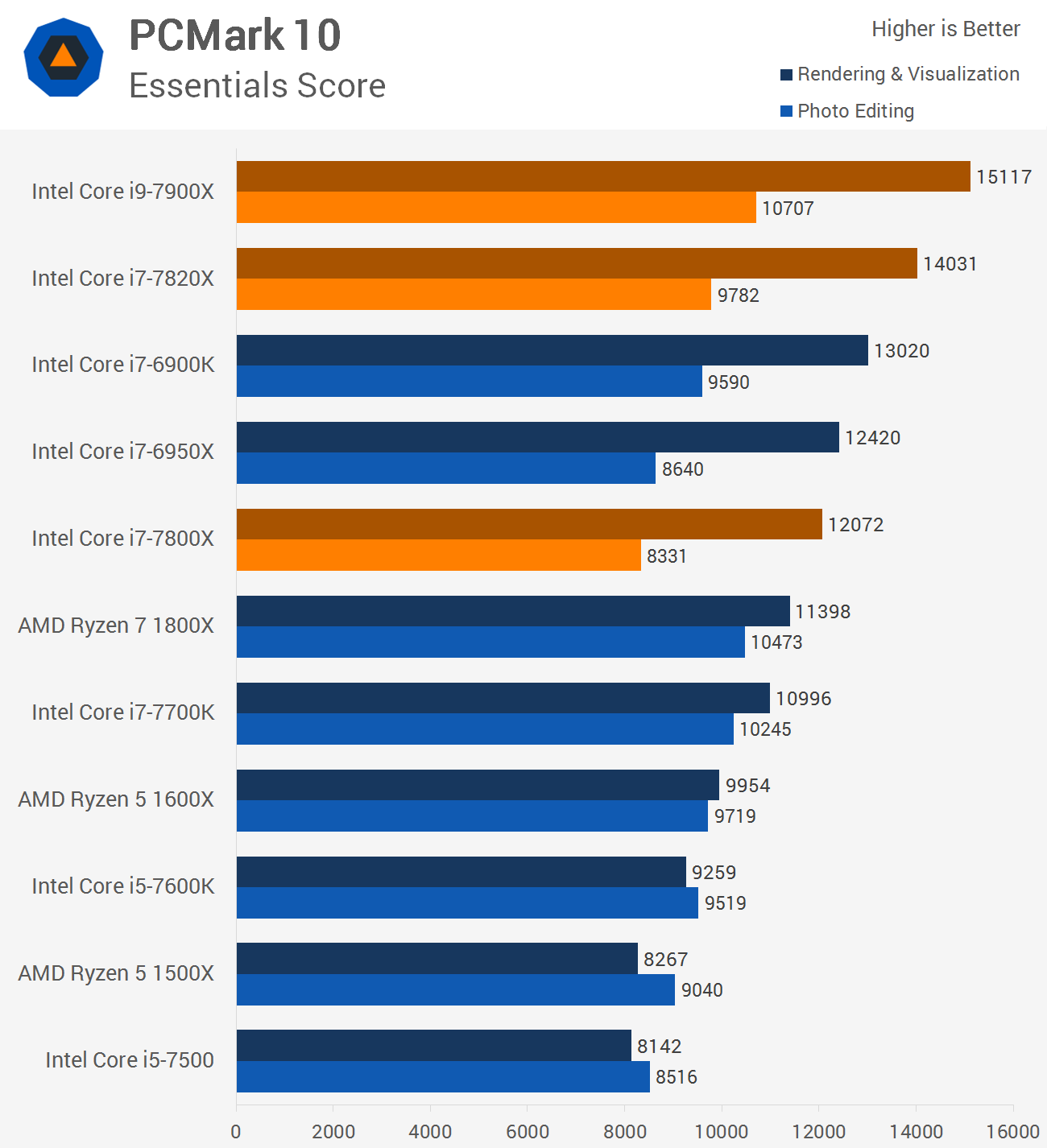
The Digital Content Creation test group reflects the demands of working with digital content and media. The tests include photo editing, rendering and visualization and video editing. The graph above shows the performance of the first two test groups and a following graph will look at video editing.
As expected, the Core i9-7900X does well in these tests, outscoring the Ryzen 7 1800X by a 33% margin for the rendering test, though it was only 2% faster at photo editing, which will use far fewer cores.

Lastly we have PCMark 10's video editing results and again, editing typically isn't that taxing on the CPU and few editing applications do a good job of utilizing more than a few cores. That's certainly reflected here as the 7700K was by far the fastest CPU tested. The Core i9-7900X handled business too but it wasn't much faster than the 1800X.
